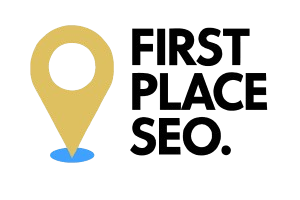What is Internal Linking?
Internal linking refers to the practice of linking one page of a website to another page within the same domain. Unlike external links that connect your site to external domains, internal links help users and search engines navigate through the content on your website. This link architecture is crucial for distributing link equity and establishing a clear site navigation path.
Why is Internal Linking Important?
- Improves User Experience: By providing clear navigation paths, internal links make it easier for visitors to find relevant content, thereby enhancing their overall experience.
- Enhances SEO Performance: Internal links contribute to better crawlability by search engine bots, ensuring that your pages are indexed more efficiently.
- Distributes Link Juice: Through link flow, internal links distribute link authority across various pages, potentially improving their page rank.
- Establishes Website Hierarchy: Internal linking helps define the website architecture, making the structure of your content more logical and easy to follow.
Types of Internal Links
Contextual Links
These are links embedded within the content of your page. They provide contextual connections between related topics, enhancing both user experience and SEO optimisation.
Navigational Links
Found in menus, footers, and sidebars, these links assist in guiding users to key sections of your site. Effective website navigation relies heavily on well-placed navigational links.
Anchor Text Links
These links use anchor text to connect to other pages. The choice of anchor text is crucial as it signals the relevance of the linked page to search engines.
Best Practices for Internal Linking
Use Descriptive Anchor Text
Ensure your anchor text is descriptive and relevant to the content it’s linking to. This not only aids in SEO but also provides users with clear indications of what to expect.
Link to Relevant Content
Always link to pages that are contextually related to enhance the user’s journey and to establish meaningful internal connections.
Optimise Link Placement
Strategically place links where users are likely to find them useful. This includes within the content, as well as in navigation menus and footers.
Maintain a Logical Site Structure
A clear and logical site structure aids both users and search engines in navigating your website. This involves a well-thought-out link strategy that highlights important pages.
Internal Linking Strategies
Content Hubs
Create content hubs where central pages link out to related sub-pages. This structure not only aids in content optimisation but also enhances SEO architecture.
Breadcrumbs
Using breadcrumbs provides a secondary navigation path that improves the user experience and SEO structure by showing the hierarchy of pages.
Regular Audits
Perform regular link audits to ensure all internal links are functional and relevant. Broken or outdated links can negatively impact both user experience and SEO.
Advanced Internal Linking Techniques
Dynamic Linking
Use dynamic internal linking to automatically link to relevant content based on user behaviour and content relevance. This technique leverages advanced SEO techniques to keep the content fresh and connected.
Link Distribution Analysis
Analyse how link distribution affects your site’s SEO. Tools like Google Search Console can provide insights into which pages are receiving the most link equity and how to balance it.
Common Internal Linking Mistakes to Avoid
- Overusing Exact Match Anchor Text: This can appear spammy to search engines and users alike.
- Ignoring Orphan Pages: Ensure all pages have at least one internal link pointing to them to avoid them being overlooked by search engines.
- Too Many Links on a Page: Overloading a page with links can dilute the value of each link and overwhelm users.
Internal linking is a integral part of a robust SEO strategy. By thoughtfully integrating internal links, you can improve website navigation, enhance user experience, and boost your site’s visibility in search engine results. Remember to continually evaluate and refine your internal linking strategy to keep up with best practices and to ensure that your content remains accessible and optimally structured.

